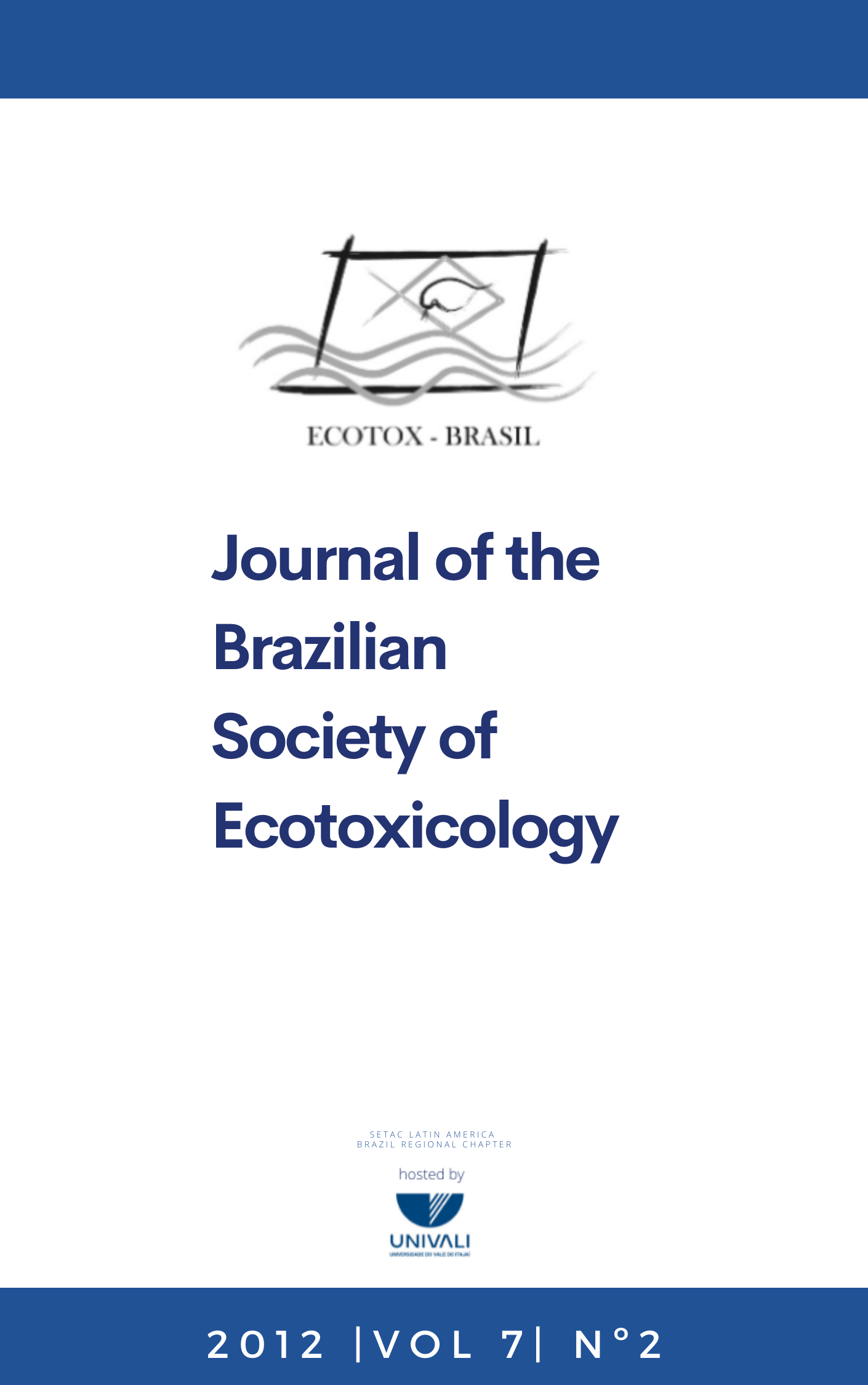Genotoxicity evaluation of tilapia (Oreochromis niloticus) exposed to waters from two sites of Itajaí-Açu River (SC, Brazil)
Abstract
The relationship between the genes and the effects attributed to them has been object of many studies, especially those seeking to establish the response of genes to environmental prod. The aim of this work was to establish a standard system to monitor effluents by using juvenile Nile tilapia (Oreochromis niloticus) as a bioindicator of genotoxicity, utilizing micronuclei test and comet assay. For this, the fish were exposed during 24, 48, 72 and 240 hours (10 days), to water samples collected at two sites of the Itajaí-Açú River: Ilhota and Blumenau, in the Santa Catarina State, Brazil. For positive control the herbicide 2,4-D (75 ppm) was utilized, and the negative control of each fish were the values obtained before the exposure to the river water, termed time zero (T0). Water samples from both sites of the Itajaí-Açú River showed significant genotoxic effects in erythrocytes of the exposed fishes. The comet assay was a more sensitive test to detect genotoxic damage in shorter exposure times (24 and 48 hours) than the micronuclei test.
Key words: genotoxicity, comet assay, micronuclei test, Oreochromis niloticus, bioindicator
Downloads
How to Cite
Issue
Section
License
Copyright © 2006 ECOTOX-Brasil
Copyright notice: It is a condition for publication that manuscripts submitted to this journal have not yet been published and will not be simultaneously submitted or published elsewhere. By submitting a manuscript, the authors agree that copyright for their article is transferred to the Sociedade Brasileira de Ecotoxicologia (ECOTOX-Brasil) if and when the article is accepted for publication. The copyright covers the exclusive rights to reproduce and distribute articles, including reprints, photographic reproductions or any other reproduction of a similar nature, including translations. No part of this publication may be reproduced, stored in a retrieval system or transmitted in any form or by any means, electronic, mechanical, photocopying, recording or otherwise, without permission of the publisher.
Notice: While every effort is made by the EEC, editors and editorial board to see that no inaccurate or misleading data, opinions or statements appear in this journal, they wish to make it clear that the contents of the articles and advertisements published herein are the sole responsibility of the contributors or advertisers concerned. Accordingly, the EEC, the editorial board and editors and their respective employees, officers and agents accept no responsibility or liability whatsoever for the consequences of any inaccurate or misleading data, opinion or statement.




